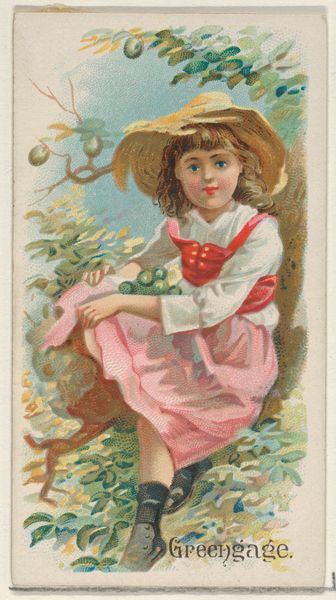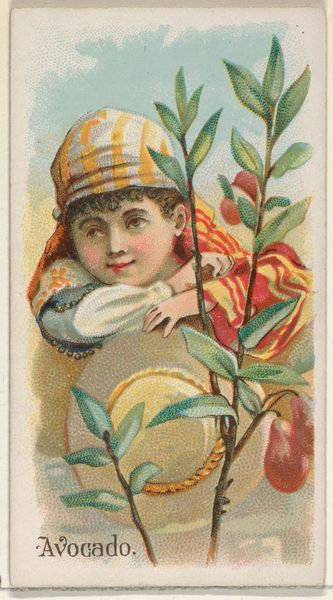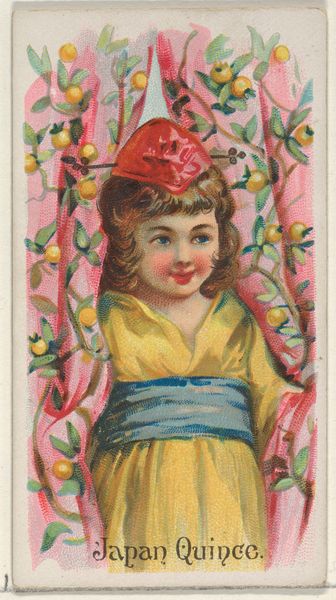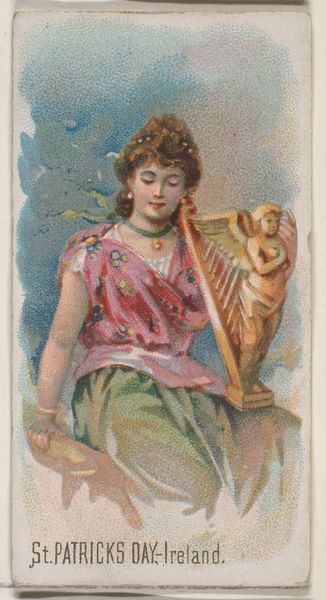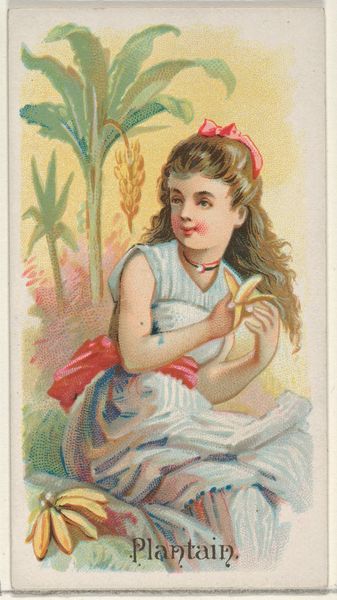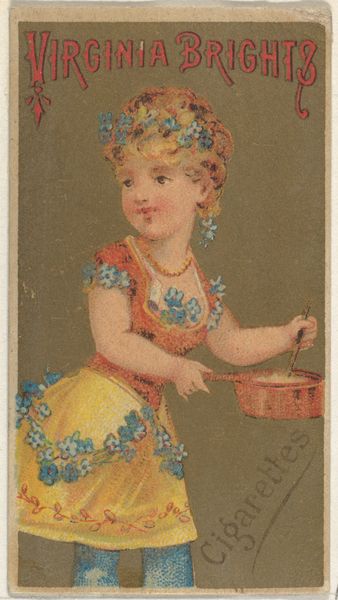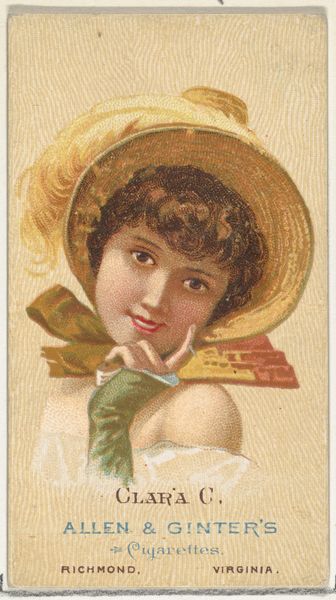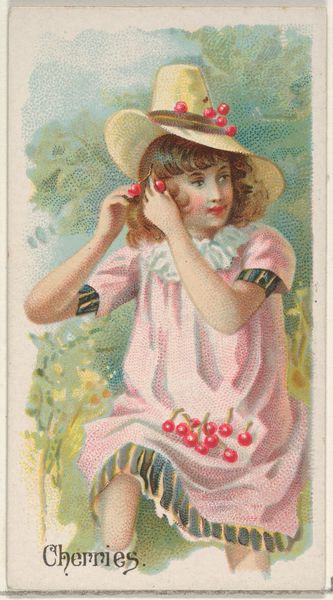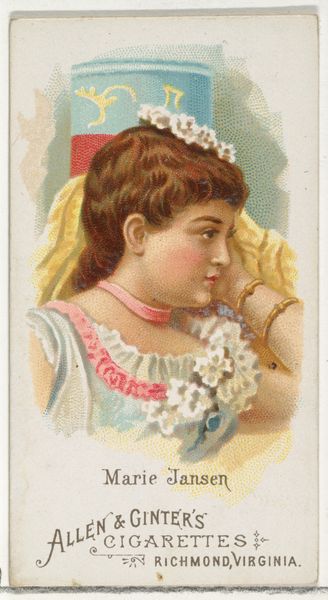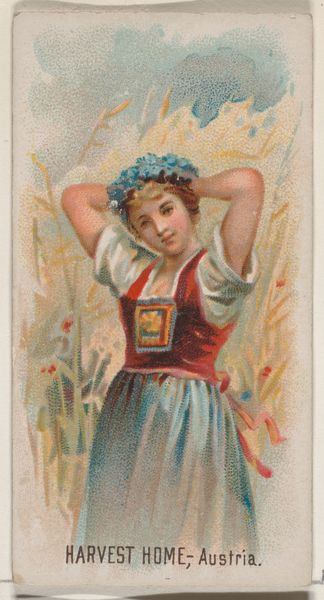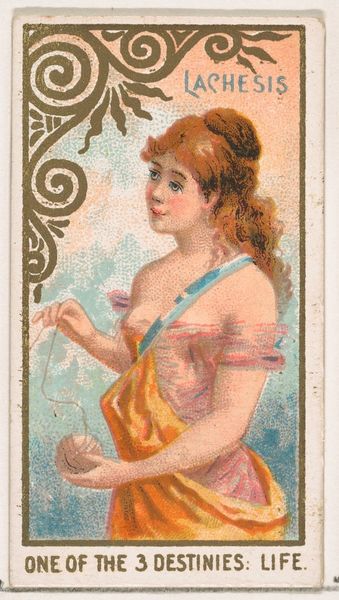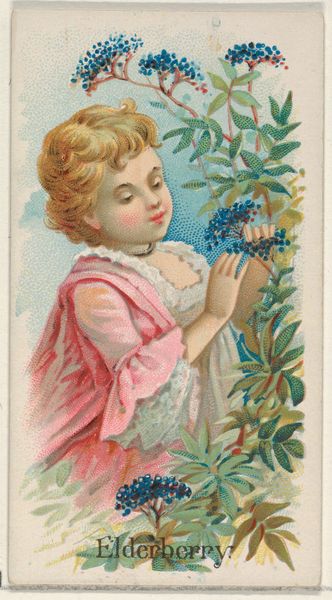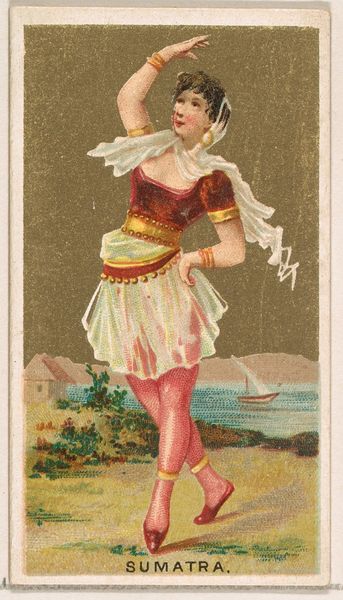
Figs, from the Fruits series (N12) for Allen & Ginter Cigarettes Brands 1891
0:00
0:00
Dimensions: Sheet: 2 3/4 x 1 1/2 in. (7 x 3.8 cm)
Copyright: Public Domain
Curator: Here we have "Figs, from the Fruits series (N12) for Allen & Ginter Cigarettes Brands," created in 1891. It's currently held in the Metropolitan Museum of Art. Editor: There's a casual sweetness to this image. The boy looks almost caught in the act, his finger to his lips as if debating whether to take another bite of fig. It has an almost furtive but charming feel. Curator: Yes, and it's worth noting that these cards were originally designed to be collected within cigarette packs. Allen & Ginter was one of the first tobacco companies to include such cards, which increased the appeal of their product, embedding this imagery within a broader context of consumption and societal norms. Editor: Absolutely. I find it fascinating how something like a simple print could function as both advertising and a collectible. Considering it’s a mass-produced item, it has this surprisingly detailed watercolor illustration look. You can almost feel the paper quality, the cheapness, but simultaneously see the craftsmanship in depicting light playing across the fruit. Curator: Exactly, and the artist employs elements reminiscent of impressionism, capturing the fleeting moment, while also engaging in what one might describe as genre-painting. These cards would become immensely popular, illustrating a cultural shift towards mass media and collectible commodities. They offered snapshots of a wider world, creating desire through representation. Editor: I agree. It highlights how industries, like tobacco, have always played a key role in shaping artistic tastes. These collectible cards helped establish certain styles as desirable, linking artistic merit directly to their own sales strategies, and to the circulation of commodities at large. And beyond their historical utility, they have this charm to them that’s immediately disarming and attractive to viewers, even today. Curator: A great point, and one that shows how seemingly small items like these can hold an important place in both art history and the wider landscape of cultural production and power. Editor: It certainly adds a layer to appreciating everyday aesthetics, how seemingly mundane illustrations become imbued with societal meanings over time.
Comments
No comments
Be the first to comment and join the conversation on the ultimate creative platform.
